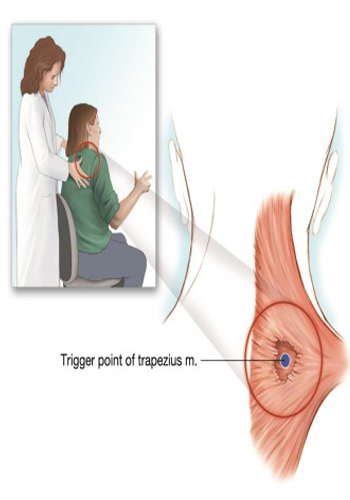
Fibromyalgia In The Cervical Muscles
Fibromyalgia In The Cervical Muscles
Clinical Syndrome
Fibromyalgia is a chronic pain syndrome that affects a focal or regional part of the body. Fibromyalgia of the cervical spine is one of the most common painful conditions encountered in clinical practice. If you don’t have a diagnosis An indispensable finding is the presence of myofascial trigger points on physical examination. These trigger points are thought to be the result of microtrauma to the affected muscles. As a result of stimulation of myofascial trigger points, the patient pain recurs or exacerbates pain. Although these trigger points are usually localized in the cervical paraspinous muscles, trapezius muscle and other muscles of the neck, the pain is often reflected in other areas. This aforementioned pain syndrome may be misdiagnosed or attributed to other organ systems, thus leading to extensive evaluation and ineffective treatment. Myofascial trigger points in cervical spine fibromyalgia The pathophysiology remains unclear, but the common denominator appears to be tissue trauma. Acute trauma caused by excessive strain on the muscles often causes fibromyalgia. repetitive microtrauma other coexisting disease processes such as muscle damage, damage to muscle fibers due to exposure to extreme heat or cold, overuse, prolonged immobility of agonist and antagonist muscle units, or radiculopathy It can also cause cervical spine fibromyalgia. Various other factors also predispose patients to the development of cervical spine fibromyalgia. For example, someone who exposes their body to unusual physical activity Fibromyalgia may develop in weekend athletes. Poor posture while sitting at the computer or watching television has also been implicated as a predisposing factor. Additionally, previous injuries can also cause abnormal muscle function. and may increase the risk of developing fibromyalgia. If the patient also suffers from malnutrition or additionally existing psychological abnormalities, these may exacerbate all these predisposition factors. Usually, cervical The pain of spinal fibromyalgia is accompanied by stiffness and fatigue. These symptoms increase the functional disability associated with this disease and complicate its treatment. Fibromyalgia as the primary disease or radiculopathy and It may occur secondary to other painful conditions, including chronic regional pain syndromes. Psychological or behavioral abnormalities, including depression, often coexist with muscle abnormalities and this concomitant Management of these conditions should be an integral part of a successful treatment plan. Studies have shown that an abnormality in the serotonin transport gene may predispose patients to the development of fibromyalgia by causing abnormal pain. suggested.
Signs and Symptoms
As mentioned earlier, the sine qua non of cervical spine fibromyalgia is the myofascial trigger point. This trigger point represents the pathological lesion and is localized in the affected muscle. characterized by a point of tenderness. Mechanical stimulation of the trigger point by palpation or stretching causes not only intense local pain but also referred pain. tense bands of muscle fibers usually detected when myofascial trigger points are palpated. In addition, involuntary retraction of the stimulated muscle is often seen and is referred to as the jumping symptom. neck stiffness, pain in range of motion, and In the nondermatomal model, positive jerking symptoms, such as pain radiating to the upper extremities, are also characteristic of cervical spine fibromyalgia. Although this referred pain occurs in a well-researched and characteristic pattern, it is usually leads to misdiagnosis.
Treatment
Treatment focuses on blocking the myofascial trigger point and providing long-term relaxation in the affected muscle. Since the mechanism of action is not well understood, a treatment plan is developed by trial and error method. Local anesthetic Conservative treatment consisting of trigger point injections with a saline solution or a saline solution is the starting point. Since many patients suffering from cervical spine fibromyalgia have underlying depression and anxiety, antidepressants are the starting point. Implementation is an integral part of most treatment plans. Pregabalin and gabapentin have also been shown to relieve symptoms associated with fibromyalgia. In addition, for the treatment of fibromyalgia of the cervical spine, various adjuvant methods are available. The therapeutic use of heat and cold for pain relief is often combined with trigger point injections and antidepressants. Some patients require subcutaneous nerve stimulation or electrical They experience reduced pain upon application of stimulation and fatigue of the affected muscles. Exercise can also provide symptom relief and improve fatigue associated with this disease. Currently by the Food and Drug Administration Although not approved for this indication, injecting small amounts of botulinum toxin type A directly into trigger points has been used successfully in patients who do not respond to conventional treatment modalities.
